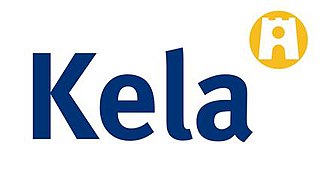IBM mainframes are large computer systems produced by IBM since 1952. During the 1960s and 1970s, IBM dominated the large computer market. Current mainframe computers in IBM's line of business computers are developments of the basic design of the IBM System/360.

Multiple Virtual Storage, more commonly called MVS, was the most commonly used operating system on the System/370 and System/390 IBM mainframe computers. It was developed by IBM, but is unrelated to IBM's other mainframe operating systems, e.g., VSE, VM, TPF.
z/VSE is an operating system for IBM mainframe computers, the latest one in the DOS/360 lineage, which originated in 1965. Announced Feb. 1, 2005 by IBM as successor to VSA/ESA 2.7, then-new z/VSEwas named to reflect the new "System z" branding for IBM's mainframe product line.

z/OS is a 64-bit operating system for IBM mainframes, produced by IBM. It derives from and is the successor to OS/390, which in turn followed a string of MVS versions. Like OS/390, z/OS combines a number of formerly separate, related products, some of which are still optional. z/OS offers the attributes of modern operating systems but also retains much of the functionality originating in the 1960s and each subsequent decade that is still found in daily use. z/OS was first introduced in October 2000.

Db2 is a family of data management products, including database servers, developed by IBM. They initially supported the relational model, but were extended to support object-relational features and non-relational structures like JSON and XML. The brand name was originally styled as DB/2, then DB2 until 2017 and finally changed to its present form.

Customer Information Control System (CICS) is a family of mixed language application servers that provide online transaction management and connectivity for applications on IBM mainframe systems under z/OS and z/VSE.
IBM MQ is a family of message-oriented middleware products that IBM launched in December 1993. It was originally called MQSeries, and was renamed WebSphere MQ in 2002 to join the suite of WebSphere products. In April 2014, it was renamed IBM MQ. The products that are included in the MQ family are IBM MQ, IBM MQ Advanced, IBM MQ Appliance, IBM MQ for z/OS, and IBM MQ on IBM Cloud.
Tuxedo is a middleware platform used to manage distributed transaction processing in distributed computing environments. Tuxedo is a transaction processing system or transaction-oriented middleware, or enterprise application server for a variety of systems and programming languages. Developed by AT&T in the 1980s, it became a software product of Oracle Corporation in 2008 when they acquired BEA Systems. Tuxedo is now part of the Oracle Fusion Middleware.
The IBM System z Application Assist Processor (zAAP), previously known as the zSeries Application Assist Processor, is a mainframe processor introduced by IBM in 2004. zAAP engines are dedicated to running specific Java and XML workloads under z/OS, accelerating performance. zAAPs are available for zSeries 990 and 890 servers and later zSeries and zEnterprise models. Beginning with the IBM z13, the zAAP functionality is integrated with zIIP processors.
Cullinet was a software company whose products included the database management system IDMS and the integrated software package Goldengate. In 1989, the company was bought by Computer Associates. Cullinet was headquartered at 400 Blue Hill Drive in Westwood, Massachusetts.

TELON, later renamed CA-TELON, is one of the first commercially successful application generators for building business applications.
GXS is a subsidiary of OpenText Corporation headquartered in Gaithersburg, Maryland, United States. Its GXS Trading Grid managed more than twelve billion transactions in 2011. Since 2004, GXS has invested more than $250 million in GXS Trading Grid. As of March 16, 2012, more than 550,000 businesses connect to GXS Trading Grid and, on average, more than 2,000 new businesses join each month.

Rational Business Developer (RBD) provides a workbench for Enterprise Generation Language (EGL) development, an end-to-end rapid development approach.
The history of operating systems running on IBM mainframes is a notable chapter of history of mainframe operating systems, because of IBM's long-standing position as the world's largest hardware supplier of mainframe computers.
Datacom/DB is a relational database management system for mainframe computers. It was developed in the early 1970s by Computer Information Management Company and was subsequently owned by Insyte, Applied Data Research, Ameritech, and Computer Associates International, Inc.. Datacom is now owned by CA Technologies, which renamed it to CA-Datacom/DB and later to CA Datacom/DB.

Linux on IBM Z is the collective term for the Linux operating system compiled to run on IBM mainframes, especially IBM Z and IBM LinuxONE servers. Similar terms which imply the same meaning are Linux on zEnterprise, Linux on zSeries, Linux/390, Linux/390x, etc. The terms zLinux or z/Linux are also sometimes used, but these terms are discouraged by IBM as they create the implication of an IBM-offered or IBM-distributed version of Linux, which is incorrect.
JEUS is a Korean Web application server which is developed by TmaxSoft. JEUS provides the web application server component of TmaxSoft's middleware-tier framework solution. It has been widely adopted in Korea where it holds the largest (42.1%) share of the market.









